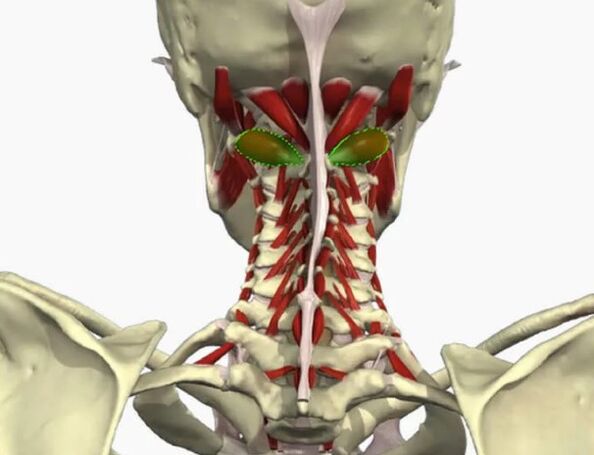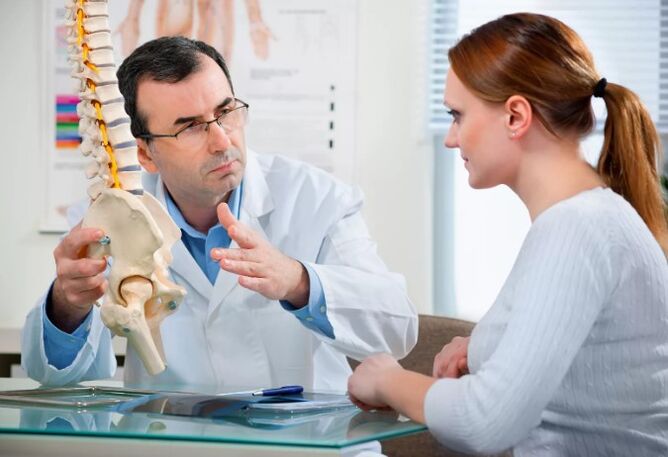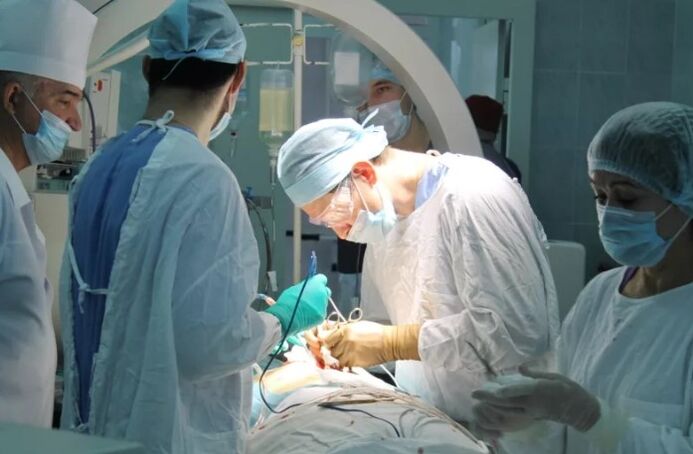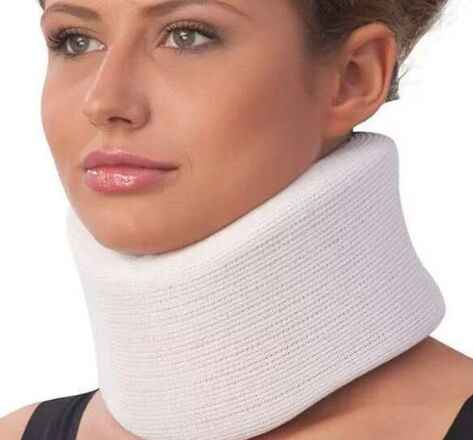Cervical osteochondrosis- This is a disease that is a gradual destruction of the cartilage tissue of the intervertebral joints and neck discs.

How should we put ourselves on the shoulders easily?
If it is difficult to turn your head when your name is on the street, if your neck literally does not hold the word and only causes pain, then it is time to check yourself for osteochondrosis.
It is a part of the cervix that is most prone to traumas because it is the most mobile and at the same time has a weak muscle corset. In a small mobile spine, the body creates a large load. And the spinal canal itself is quite narrow. It is easily contracted during pressure on it.
Thousands of people feel gravity in the back or capture. And there is no doubt about the danger, they are called such physiological manifestations of fatigue and nearby overall coldness. Lots of blood vessels and nerve endings are concentrated in the neck. With osteochondrosis, the artery of the spine is contracted, which provides the back of the cerebrum, elongated brain and brain. As a result, the movement of the person cannot be coordinated, it is possible to lose the sense of equilibrium, the eyesight falls, the hearing will deteriorate, and sometimes this phenomenon causes a stroke.
Fact. According to WHO statistics, people aged 30 to 40 suffer from cervical osteochondrosis. Doctors explain this tendency by reducing the mass of physical activity. And the prevalence of these diseases in industrial countries is 60-80%.
Osteochondrosis syndromes and symptoms
- Stenosis (narrow syndrome of spinal canal): Weakening of spinal cord vessels vessels, osteophytes (growth of bone tissue) or thickened spine ligament vessels. As a result, blood flow to the affected area is disordered. The person begins to feel, feels noticeable in the cervical spine. In the upper and lower extremities there are bumps and tingling
- Rook: Intertebral nerve roots weakening. It causes a headache that is affected by aches, burning or pulsating impulses, and sometimes sensations are similar to symptoms of hypertension. This syndrome, speech defects and impaired smell, facial muscle hypertrophy, linguistic muscle sensitivity damage, throat "lock" sense of tumors. Breathing occurs, a person experiences a snake, he often seems to be unreasonable to "land" the nose.
- Willy artery syndrome: It arises during contraction of the spine artery (compression). Its main satellite is pulsating pain. Attacks can shift parietal share, area above the eyebrows, temporary and occipital share.
- Cardial Syndrome:This resembles angina pectoral attacks, but their duration is much higher. Pain is reflected in the diaphragm. In some individuals, this phenomenon is accompanied by an increase in blood pressure, arrhythmia.

The underlying causes of the development of the disease
- Failure in metabolism;
- Lifestyle with low motor action;
- Hereditary predisposition;
- Age -related osification;
- Fixing the muscles, resulting in posture;
- Lack of fluid and vitamins in a daily diet;
- Long presence in an uncomfortable condition that increases pressure on the discs and spine;
- Excess weight or overload due to the bearing of the heels for the spine;
- All types of spinal injuries;
- Regular weight rise;
- Autoimmune diseases (the process of self -esteem of the immune system), which causes degeneration of cartilage tissue;
- Stress that causes muscle spasms and blood flow to intervertebral discs;
- Hypothermia.
Diagnosis of cervical osteochondrosis
The initial diagnosis of "osteochondrosis of the cervical-toran section" or simply the cervical department may already be done by the physician during the patient's initial examination. Expert determines:
- Type of human physics;
- Posture;
- Line of processes;
- Side contours of the cervix and the location of the shoulder blades;
- Localization of pain points and pain levels;
- The amplitude of the flexibility of the spine
- Muscle relief.

All this will tell you how the disease is flowing. In addition, the doctor will send many examinations:
- Digital radiography;
- CT (computed tomography);
- MRI (magnetic resonance imaging);
- Ultrasound Dopplerography of the main arteries of the brain: A special ultrasound sensor determines the condition of blood flow and blood vessels.
Methodology for the treatment of osteochondrosis of the cervical spine
The doctor will help the most optimal solution to the problem. It will offer a wide variety of treatment methods: medications with physiotherapy or determine the surgery that spends your body.
Conservative treatment- This is primarily a drug therapy. It relieves pain, relieves muscle tension and destroys inflammation. For such purposes, non -anti -anti -anti -anti -anti -anti -anti -anti -anti -anti -anti -remedies and analgesics are prescribed. Chondroprotectors also include a prescription list to activate the recovery processes in the cartilage tissue, as well as B vitamins and external medications: gels and ointments containing NSAIDs.
PhysiotherapyIn turn, the nourishing agents of the intervertebral disc cartilage tissue are saturated and promotes cartilage regeneration. The doctor also writes exercises for therapeutic gymnastics - to strengthen the muscle corset and to develop the ligament flexibility. You can conduct an introductory lesson to perform the exercises correctly.

Surgical treatmentIt is advisable if it is impossible to distribute drugs and physical effects. He is back if the patient has a spinal canal catastrophically narrow. Operative intervention is called anterior cervical discroctuary. The surgeon immobilizes the affected segment of the spinal cord and removes the intervertebral hernia, which rises to the spinal nerve. Over time, the vertebrates between which the disc is removed is fed. This is called spondylodes. For more of them, a specialist can operate with a cage stabilization - that is, the intervertebral space is filled with an artificial insert.
After 3-5 days, the operating one is prescribed from the hospital for outpatient treatment. Rehabilitation takes about 3 months on average and depends on the patient's prescribed implant and professional activity.
What is the best way to create a human lifestyle, diagnosed with osteochondrosis of the neck?
The daily routine should include a mandatory walk, and the jump and running are better to avoid. Contraindicated for a long time to spend time in a sitting position, swimming is useful - it not only enhances muscle tone but also relieves spasms to limit the body. In the evening there will be no excess shower (except for exacerbation of the disease except for the treatment period in the cervical region). Protecting diet is important. Use magnesium and calcium -saturated products - nuts, dairy and seafood, legumes. We have to leave alcohol.
Is it possible to visit a sauna during osteochondrosis exacerbation?
Usually, heating is useful for the patient, but after increased praise, you will have to refuse to go into cold water. You cannot run out of frost. Otherwise, the disease will be exacerbated. Cervical osteochondrosis is susceptible to any temperature differences, including climatic. For example, autumn colds can adversely affect the human well.
What complications can occur after osteochondrosis of the cervical region?

If over time, when the first signs of the disease appear, the course of treatment should not start, then the neck may stop in the direct sense of your word. And the complications of this disease are quite serious. There is a risk of protrusion - the so -called "protrusion" of the intervertebral disc outside the spine, which can then be purchased with hernia. Nerve roots can be injured in the neck. Or osteophytes (bone growth on the spine) appear. Words often weaken the muscles or paresis - the state when the head starts to side or forward. In this section, in the cervical spine processes, the arteries of the spine that feed on the brain are located. Disruption of this bloodstream is one of the most serious events. The desire for treatment can lead to neuralgia, deafness and loss of vision. But if you deal with this issue, even at an early stage of its development, then the disease can be prevented.
Why do you need a chantsis collar?
It is an orthopedic varnish made of flexible material used to treat the neck to treat cervical osteochondrosis. But it is not possible to wear such a device for a long time to correct the neck, as the muscles can weaken over time, and you will be used to unwittingly wraping your head to the pages without additional support. Chansa reset means does not allow the spine to change and maintain a corrective effect after a massage session. He loses his weight and evenly distributes it to the collarbon and the base of the neck. At the same time, the head remains in the right position.


























